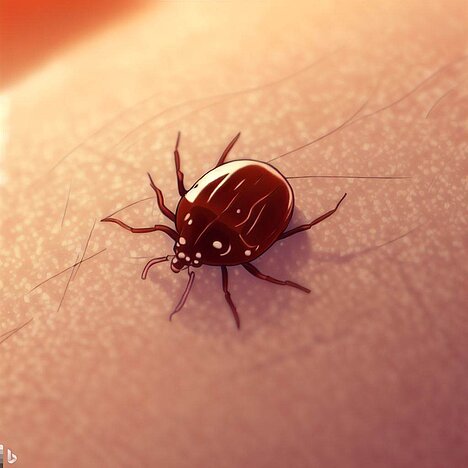Anaplasmosis

Anaplasmosis is an infectious disease caused by bacteria of the genus Anaplasma. These bacteria are transmitted to dogs through tick bites and can damage various organs and cells of the dog. Anaplasmosis can lead to severe symptoms such as fever, loss of appetite, joint pain, bleeding and anemia. In this blog post, you can find out more about the causes, diagnosis, treatment and prevention of anaplasmosis in dogs.
Causes of anaplasmosis
The most common pathogens causing anaplasmosis in dogs are Anaplasma phagocytophilum and Anaplasma platys. These bacteria are transmitted to the dog through the bite of infected ticks. The ticks must be attached to the dog for at least 24 hours in order to transmit the bacteria. The ticks that transmit Anaplasma phagocytophilum are mainly the wood tick (Ixodes ricinus) and the sheep tick (Ixodes scapularis). The ticks that transmit Anaplasma platys are mainly the brown dog tick (Rhipicephalus sanguineus) and the American dog tick (Dermacentor variabilis).
Anaplasma phagocytophilum infects the dog's white blood cells and can lead to inflammation of the blood vessels, joints, lungs and brain. Anaplasma platys attacks the dog's blood platelets and can lead to impaired blood clotting and bleeding.
Diagnosis of anaplasmosis
The diagnosis of anaplasmosis in dogs is based on the clinical symptoms, the medical history, the detection of antibodies against the bacteria in the blood serum or the detection of bacterial DNA in the blood using a PCR test. The clinical signs of anaplasmosis can vary depending on the organ affected, but typical signs include
- Fever
- loss of appetite
- weight loss
- lethargy
- Joint pain and swelling
- lameness
- Bleeding from the nose, mouth or anus
- Bruising under the skin
- Pale mucous membranes
- Enlarged lymph nodes
- Shortness of breath
- Coughing
- Seizures
Symptoms can be acute or chronic and may overlap with other infectious diseases such as Lyme disease or ehrlichiosis. It is therefore important to make an accurate diagnosis to ensure appropriate treatment.
Treatment of anaplasmosis
Treatment of anaplasmosis in dogs consists of administering antibiotics such as doxycycline or tetracycline for at least four weeks. The antibiotics work against the bacteria and can alleviate the symptoms. However, they cannot kill all the bacteria and a relapse may occur. It is therefore important not to stop treatment too early and to have regular check-ups with the vet.
In addition to antibiotics, it may be necessary to support the dog with painkillers, anti-inflammatory medication or blood transfusions, depending on the severity of the disease. A good diet, plenty of fluids and rest can also contribute to recovery.
Prevention of anaplasmosis
The best way to prevent anaplasmosis in dogs is to avoid tick bites. This includes regularly checking the dog for ticks and removing them quickly and correctly. You should also treat the dog with a suitable tick repellent that has both a repellent and killing effect. There are various products such as collars, spot-ons or tablets that can protect your dog from ticks. However, you should always seek advice from your vet as to which product is most suitable for your dog.
You can also reduce the risk of tick bites by keeping your dog away from tick-rich areas such as tall grass, bushes or woods. You should also make sure that the dog does not come into contact with wild animals that can transmit ticks.
Finally, you can have your dog tested regularly for anaplasmosis to enable early diagnosis and treatment. This is particularly important for dogs that live in endemic areas or travel a lot.
The authors assume that a veterinarian should be consulted if an animal is ill and that medication should only be taken after consultation with a doctor or pharmacist. Only an individual examination can lead to a diagnosis and treatment decision.
We help you find the nearest vet → This way